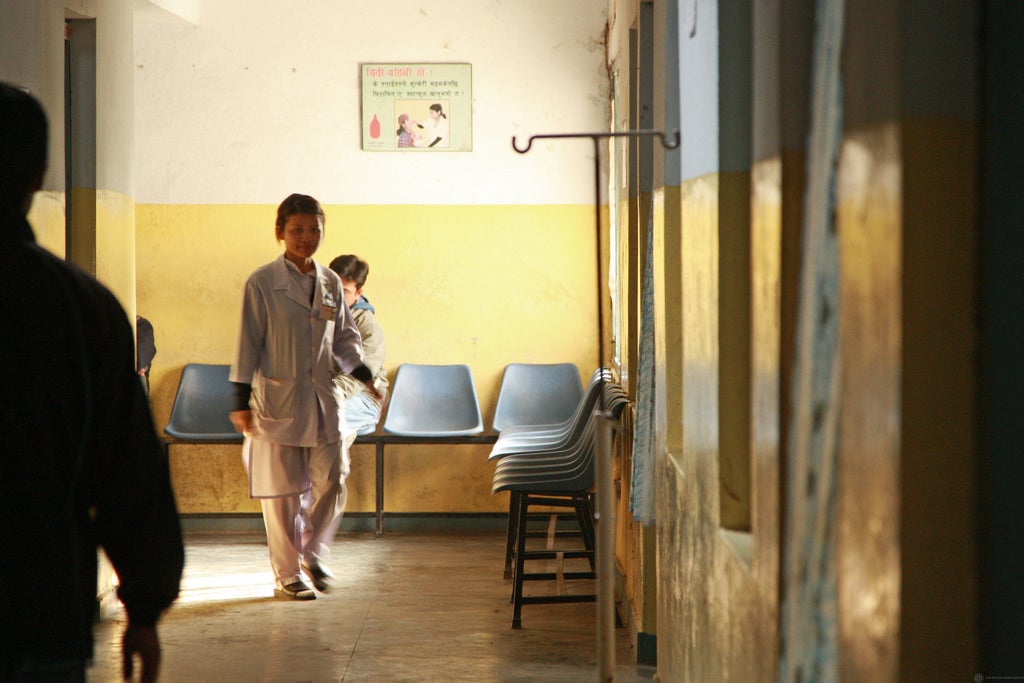PHC in the News
It's time to better understand what makes primary health care work
Originally posted on Devex on August 10, 2015.
A mother carries her sick child into a health clinic. He has had a fever for three days, and she hopes it isn’t serious. What happens next should be a given — but all too often isn’t.
 World Bank/Simone D. McCourtie
World Bank/Simone D. McCourtie
These questions paint a picture of what a primary health care system can be, and in some places already is: the front line of health, placing people at the center of care and connecting them with a spectrum of health services over the course of their lives. When a primary health care system works well, it can meet the vast majority of people’s health needs, and engage the whole community in improving health across the board. But when the system doesn’t work, consequences can be pronounced and tragic.
Recent crises — from the earthquake in Nepal to the Ebola epidemic in West Africa — have been wake-up calls: too many primary health care systems are under-resourced and fragmented, leaving countries unprepared to reach everyone with needed health services. This is true when disasters strike, and it’s also true in times of relative calm.
Without functional primary health care systems that people trust, critical health services — including prevention and treatment of infectious diseases, management of chronic conditions and access to family planning — are often inadequate or nonexistent. This fuels a daily crisis that is for the most part avoidable: In 2013, of the approximately 17,000 children under 5 who died every day, most died from causes that could have been treated and prevented through a strong primary health care system.
A number of countries are making progress building high-performing primary health care systems and providing instructive models. For instance, Rwanda has integrated services for a range of community health needs — including malaria, pneumonia, family planning, and HIV and AIDS — into its primary health care system as a core part of the country’s health reforms. This approach has helped Rwanda come close to universal health coverage for its citizens.
Still, a major stumbling block to improving primary health care is the availability of specific and relevant information to guide improvements. Countries that want to improve their primary health care systems often do not know in what ways their systems are getting better or worse — and most importantly, why."
One of the most basic indicators of the health of primary care systems is whether providers are present and appropriately trained. Yet systematic data on provider absence rates and the accuracy of their diagnoses are available for only a handful of low- and middle-income countries — and where available, they are often not comparable. From the data we do have, it is clear that in many countries, provider absence rates are high and, when present, diagnostic accuracy rates are low — factors contributing to far too many preventable deaths.
Through better measurement of what drives strong primary health care systems, there is tremendous opportunity to have a major impact on health. The recent Millennium Development Goals report made clear that the effective collection, dissemination and use of data was key to achieving global health targets. In Mexico, for example, data on the number of births attended by health professionals revealed stark inequalities between indigenous and nonindigenous populations, which led to new efforts to reduce inequities and save lives.
This fall, the United Nations is expected to ratify a bold new agenda for sustainable development for the next 15 years. For global health, the success or failure of this important agenda will depend in large part on measuring and improving primary health care. It is very difficult for countries to make sustainable gains in health — including reaching global goals such as universal health coverage — without strengthening access to and delivery of essential care in communities.
Tracking and measuring what’s working with primary health care systems will guide decisions about meaningful improvements at all levels of the health system — from doctor-patient interactions to district planning to national health strategies. And when countries know how to improve care, they can ensure that giving a mother and her child a healthier future isn’t a guess, but a guarantee.
The authors represent organizing partners of the Primary Health Care Performance Initiative, a new partnership bringing together country policymakers, practitioners, advocates and other development partners to accelerate the implementation of primary health care systems through better performance measurement, reporting and cross-country knowledge sharing. PHCPI is currently led by the World Bank Group, the World Health Organization, the Bill & Melinda Gates Foundation, Ariadne Labs and Results for Development.
About the authors



